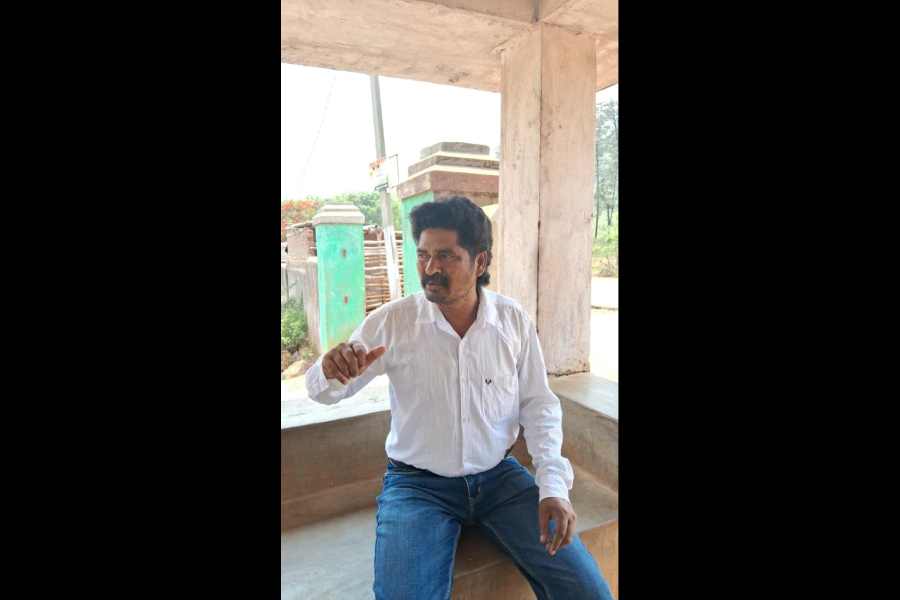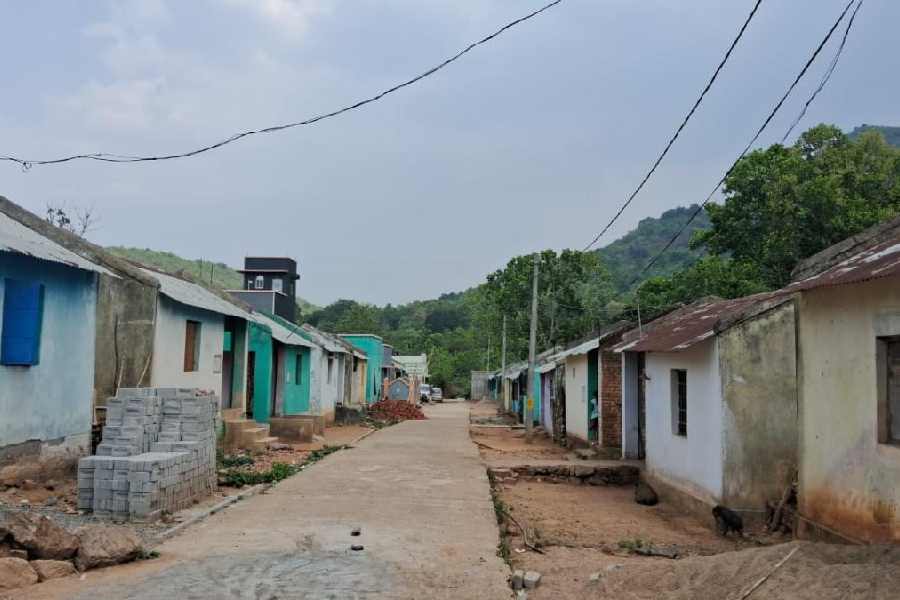Bestowed with abundance of nature, Kandhamal was once famous for its wildlife, scenic landscape, healthy climate, and serpentine ghat roads. Today, the district is known infamously for the 2008 riots that not only polarised the peace-loving tribals here but also tore the basic fabric of unity, dismantling the rich cultural heritage that the region was once proud of.
So badly has the 2008 riots affected the psyche of the people here that any mention of the elections sends shivers down their spine.
Sunil Mallick, who ekes out an existence by rearing goats, wants the elections to end as early as possible. For him, this election has the potential to stir Kandhamal’s communal cauldron yet again.
“We have seen enough of this. Never again,” says the 45-year-old, who is struggling to erase the memories of the 2008 Kandhamal riots from his mind.

Sunil Mallick, who makes a living by rearing goats. Picture by Subhashish Mohanty
Living in the resettlement village of Nandagiri under G. Udaygiri block since 2009, Mallick was among the thousands of Christians rendered homeless in the wake of the 2008 communal violence triggered by the murder of VHP leader Swami Laxmanananda Saraswati on August 23, 2008, at his Jalaspeta Ashram in Tumudibandha, another tribal-dominated area in the district.
The direct fallout of the murder was the collapse of the alliance between the BJP and the BJD in March 2009.
The riot wounds are still fresh for the marginalised people like Mallick, who only dreams of returning to his native Betticola village in the same block, but knows it is futile yearning.
The majority community members, who burnt his house and drove him and his friends out of the village 16 years ago, won’t let them live in peace if they return.
“I vividly remember the day. It was August 25, 2008, when the mob stormed our village. We were forced to flee. I left with my three daughters, one of them visually impaired, my son and wife. Sneaking out of the village at midnight we walked miles through forests to keep away from the prying eyes of the communal marauders,” recalls Mallick.
Mallick and most of his village folks stayed in rehabilitation camps set up for the riot victims. He then left for Kerala, where he worked as a daily wage labourer in a broiler farm.
He returned to Kandhamal on July 17, 2009, nearly a year after the riots, and settled down in Nandagiri, where the government allotted the riot victims small parcels of homestead land.
“The government assistance was a meagre ₹50,000 for victims with fully damaged houses and ₹20,000 for those whose dwellings suffered partial damage. The church came to our help to build these houses where we stay,” says Sunil’s friend Simanchal Nayak, adding that every election brings back the fear of violence.
Most village folks, who sustain on daily wages, echoed Mallick and Nayak’s sentiments. But they are not complaining about their financial problems. All they want is peace.
For Radhakant Nayak and Anita Nayak, who have been staying in the village since 2009, election time is the most disturbing. “We don’t even want to talk about the elections. We are scared,” says Anita.
As you move through the district your vehicle is stopped at different points by police who are being extra vigilant not just because there is an election ongoing but also due to the communally charged atmosphere of the area.
Riots destroyed the secular fabric of the district where the RSS and its affiliates like the VHP have been active for a long time, fighting what they call attempts at conversion by Christian leaders.
At the Swami’s Jalaspeta ashram, Sandya Rani Panigrahi, a matronly woman who retired as a government high school headmistress in 2018, holds sway.
A self-styled “shishya” of Swamiji who, according to Panigrahi, made the “balidaan” or “supreme sacrifice” to save the Hindu religion, she presides over the teaching of 261 girls studying from classes VI-X. Besides, 40 girls are being trained in the study of the vedas.
“There is only one male guard here. I have to look after these girls for whom there is also a hostel nearby. There is no denying the fear factor, especially after Swamiji’s ‘balidaan’,” said Panigrahi.
She took us to the room where the VHP leader was gunned down, along with four of his disciples, on Janmashtami 2008. “He was killed because he resisted conversion and sought to protect the gau maata (cow). Conversions are still going on but there is no one to protest,” said Panigrahi.
A bastion of Hindutva forces, the ashram is a place of pilgrimage for the votaries of RSS and its affiliates. Prime Minister Narendra Modi addressed a meeting in Phulbani, the Kandhamal district headquarters, on May 11.
Chief minister and Biju Janata Dal (BJD) chief Naveen Patnaik is doing everything possible to ensure that his secular image remains intact given that some damage has been done by the failed partnership talks between his party and the BJP for an alliance ahead of the polls.
Debabrata Bisoi from K. Nuagaon does not doubt that the people will again vote the BJD to power. “Try as they might, the BJP’s game plan will never succeed here. Here only Naveen’s charisma works and it will be no different this time,” he said.
Kandhamal votes on May 20











